This season hasn’t quite seen the overhaul some expected when Jurgen Klopp left last summer. Instead, Arne Slot has been subtle but mightily effective in his tactical tweaks.
Slot was not the first name linked to the Liverpool job last year, with Xabi Alonso and Ruben Amorim later briefly considered favourites.
Slot has his idea of football but his tactical identity is less rigid than those of the other candidates – or indeed, Klopp himself.
Instead, his ability to make smart decisions, develop players and control games made him the right man at the right time, but how did he manage to win the Premier League?
The squad Arne Slot inherited
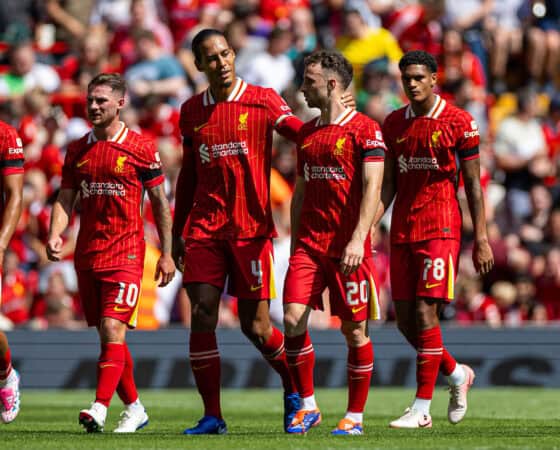
Slot took over a squad used to working hard, never giving up, pressing high and causing devastation in transition. He also possessed four genuinely world-class players in Alisson, Virgil Van Dijk, Trent Alexander-Arnold and Mohamed Salah.
The issue was that the side notoriously underperformed in front of goal and did not control the tempo of games. Creating chaos helped generate chances, but that was equally true for the Reds and their opponents.
Slot set about tightening up the defence, creating higher quality chances and getting the most out of his elite quartet.
By switching to a 4-2-3-1, Slot simplified the starting formation. The team attacked and defended with a front four, with the full-backs staying largely behind the wingers.
Playing Ryan Gravenberch and Alexis Mac Allister together in midfield eliminated the need for Alexander-Arnold to invert from right back, allowing him to get back into the wide areas where he could cross into the box.
Mo Salah’s freedom

This also meant Salah was freed from his obligation to always hug the touchline, allowing him to vary the spaces he took up and find weaknesses in the opponent’s backline.
Almost all of Liverpool’s attacks went through him as a result, and he responded with his best-ever season, managing an incredible 46 goal contributions before the end of April.
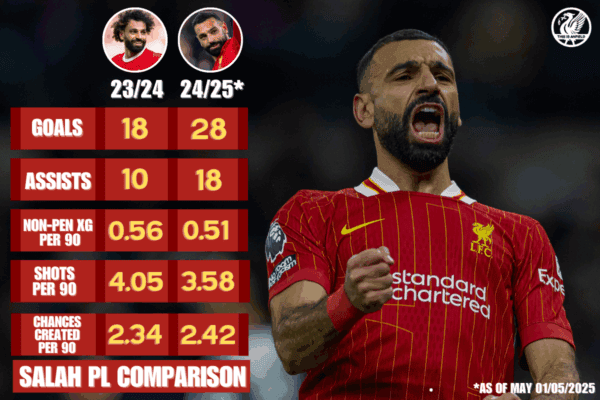
He also had a lot of his off-ball work covered by the tireless Dominik Szoboszlai, allowing him to drift into space before running at central defenders in transition.
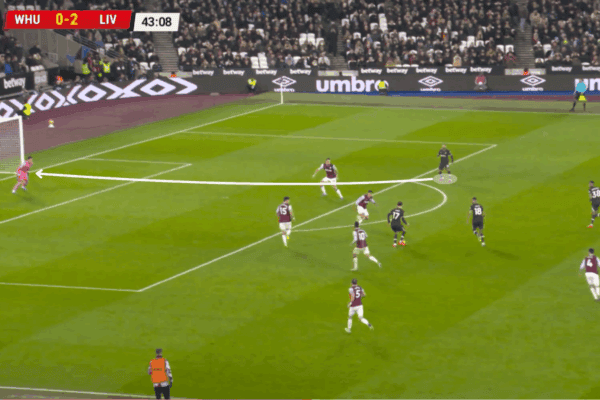
Liverpool used to practice playing the first pass forwards, but thanks to the previously unseen passing range of Van Dijk, they could go short, medium or long – it just had to be the right pass.
He could play short across the narrow backline, find Gravenberch between the lines on the half turn, or go directly to Salah on the opposite flank.
Defensive solidity

Defensively, the press remained a 4-2-4, with the frontline looking to force the opponent to go long. However, the full-backs largely refrained from jumping up to support the press.
This not only stopped opponents comfortably progressing through wide areas, but also meant Liverpool’s backline was set to recycle easily once it was won back.
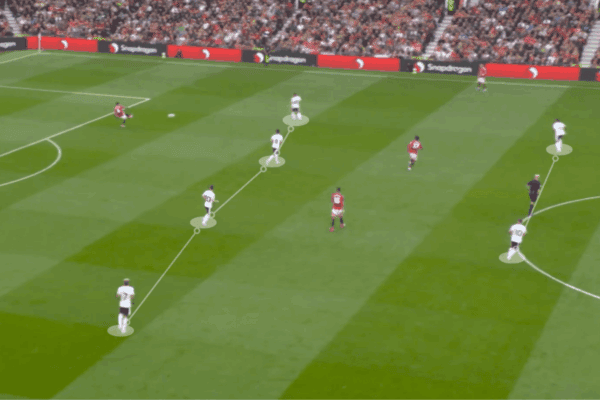
If the first line was beaten, the whole team would turn and run back to deny the opponent space in Liverpool’s half.
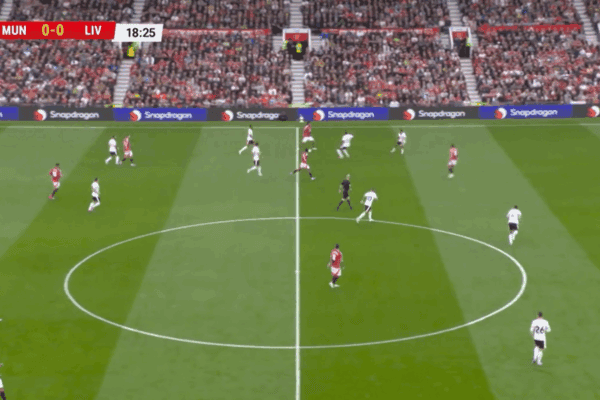
This led to a drop in overall possession – interestingly, Slot’s side averaged less possession than any of Klopp’s – but limited the quality and quantity of chances conceded.
With Van Dijk and Alisson, plus the superb Ibrahima Konate, Liverpool were comfortable defending their own box.
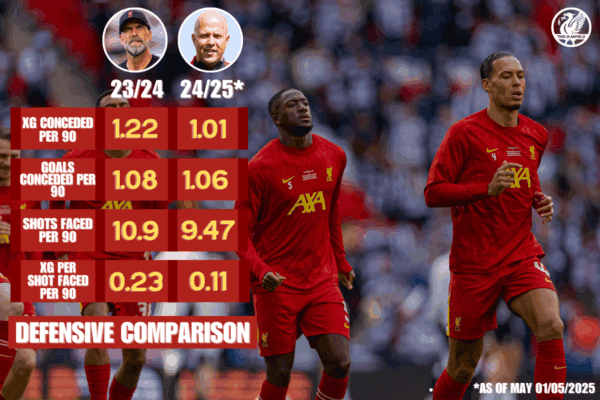
Being more flexible with the ball and more compact without it meant Liverpool could keep control of the game.
The simplicity and flexibility of this setup meant Slot could make subtle yet effective tweaks between and within games.
A good example of this was the 2-0 win over Manchester City at Anfield. In the first 15 minutes Liverpool did press high, committing the full-backs to jump up and smother Pep Guardiola’s team.
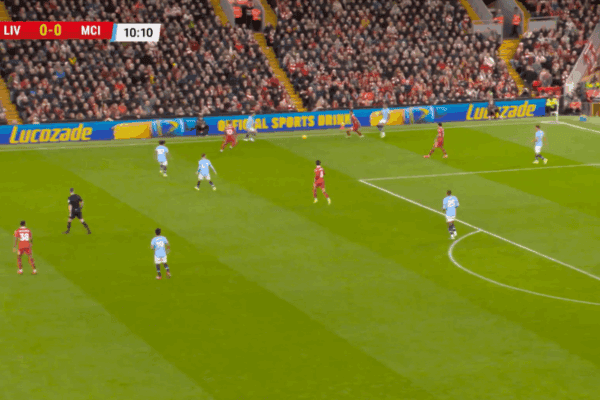
But once they got ahead, Liverpool were cool about managing the game. In the second half, they went long spells without touching the ball but didn’t give up any particularly dangerous chances.
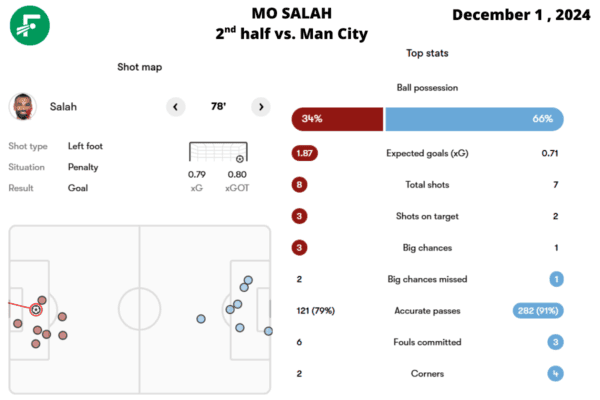
Compare that with the 4-3 win over City in 2018, when Klopp’s men scored two in a matter of minutes to overwhelm Man City before forcing an error to grab a fourth. At 4-1, they continued to commit numbers forwards, even when they became too tired to execute their attempted passes.
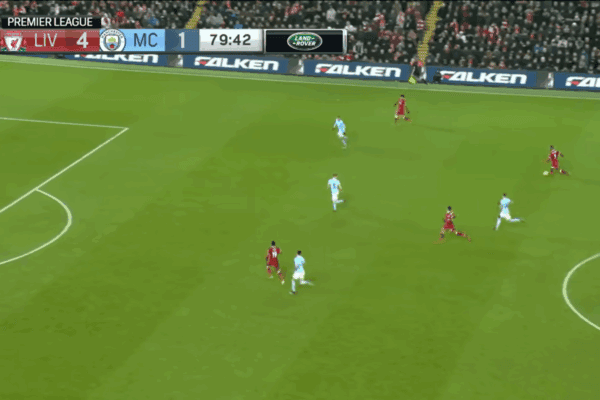
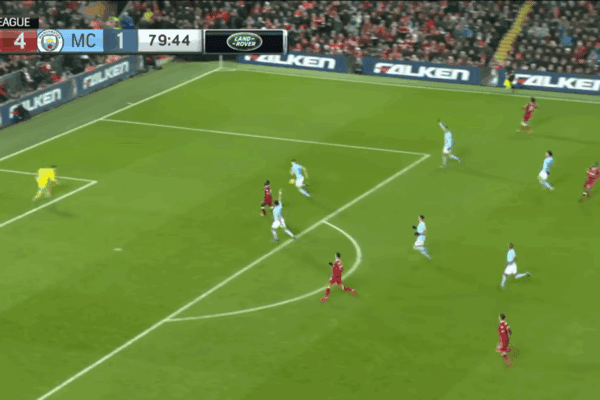
Man City managed to get two goals back and set up a nervy finish.
That’s not a criticism of Klopp – Liverpool won the game, and later the big trophies with this approach – but it’s notable that Slot’s team were much more conservative with a narrower lead, and when the chance came to kill the game off, they were ready.
A year of tweaks
How did these tactical decisions win the league?
Ultimately, the simple but effective setup was easily tweaked from game to game, and within games, to allow Liverpool to beat their opponent. They ultimately won the league by being better than the other teams.
That may sound slightly redundant, but it’s both the macro and micro story of the season. The Reds controlled games and eased to many narrow but comfortable victories.
Across the season, they ground out results, particularly across a 26-game unbeaten run. Meanwhile, their rivals didn’t implode or fall short in one huge six-pointer; they simply dropped two points here and three points there until Liverpool’s lead became unassailable.
It’s that quiet yet devastating efficiency that carried Liverpool to the league title, and it’s a testament to the calm-yet-devastatingly effective man who built the team in his image.
This is Slot’s title and there will hopefully be plenty more to come.





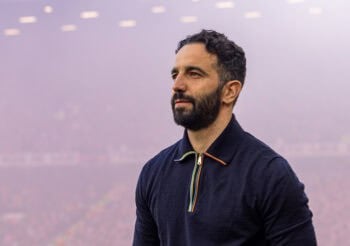













Fan Comments